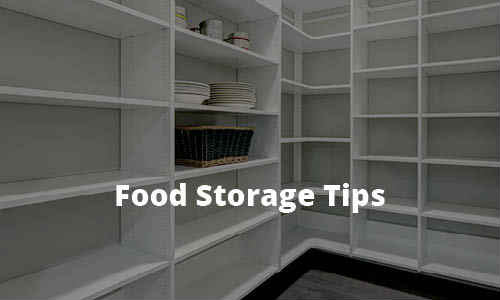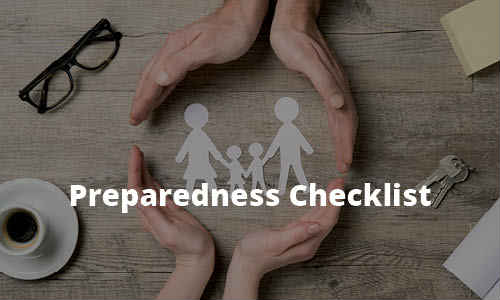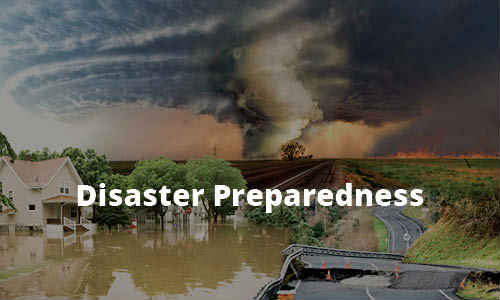Educational Resources
Welcome
We're glad you are here. If you are new to preparedness or "prepping", this is a great place to start.
It can feel daunting, and we hope to arm you with the information you need to make the preparations that fit you and your situation. Here we're going to discuss the whys for getting prepared, and recommend some ways to get started.
If you're a more experienced "prepper" and are looking for specific information, follow the links at the bottom of the page for articles, blog posts, and other sites that are brimming with prepping principles, knowledge, tips, and ideas.
Why Prepare?
If an emergency happened right this minute, how would you fare? Think about how much you depend on the ability to travel and communicate, a place to lay your head, and an ever-present supply of electricity, water, food, and heat. What if–due to circumstances beyond your control–any one or two of those were lost? What if they all were?
Most threats come from Mother Nature. Depending on where you live, earthquakes, hurricanes, ice storms, flooding, or tornadoes can play a major role in people's lives and plans. Everyone is susceptible to fires, power outages, economic changes or disruptions–and often on a very personal level: job loss, divorce, or physical disability due to accident or illness all too often turns the lives of individuals and families upside down.
It is Emergency Essentials' goal to offer products and information that will help you take care of yourself and those who depend on you should the necessities we rely on every day be taken away or lost.
By making the necessary preparations, you can have the confidence of knowing you and your family will have their needs met in an emergency, whether it is an economic, man-made, or natural disaster.
All of our recommendations are based on several "what ifs". What if your water was cut off? Or what if your electricity was cut off?
We're not talking the occasional thunderstorm or power line maintenance, but something longer lasting. In July of 2012, four million people from Virginia to Ohio lost electricity. In some cases the power outage lasted weeks!
What if your home became so damaged from an earthquake you had to evacuate? What if your entire community had to evacuate due to flooding? As a result of Hurricane Katrina in 2005, people had to leave their homes and evacuate via the routes out of town that weren't already cut off by damage. Those evacuees had to seek temporary shelter for weeks–even months.
It's easy to say to yourself, "It won't happen to me." But there's no way to predict what will happen when or where. Consider the following statement by Richard Gist, psychologist for the Kansas City Fire Department:
"Do not put off the improbable for the unthinkable. […] If there is a one in a million chance of something happening to you then it is happening to 300 people in this country right now."
The bottoHaving a plan is fundamental in emergency preparedness; a plan is your road map for navigating the unknown issues that can arise. You and your family should make a plan together and practice it regularly so everyone knows exactly what to do in any emergency. Download FREE customizable emergency and evacuation plans at https://beprepared.com/preparedness-checklist.html. Fill them out, test them out, and talk to your family about what worked and what didn't. Practicing your plan gives you an idea of what is realistic, which steps are unnecessary, and how well each member of the family can follow the plan without help.m line is: unfortunate things happen all the time–and you are the first and best defense for caring for yourself and your family.
Why Emergency Essentials?
Our mission statement says it all: "To help people prepare. To serve our customers, fellow employees, business associates, etc. in exactly the same way we would want to be served. To use the resources that we have been given to serve, build, and inspire our community."
So, What Does It Really Take To Be Prepared, Anyway?
First, you need a plan. Then water, followed by an emergency kit, food, and finally skills and other supplies.
Plan
Having a plan is fundamental in emergency preparedness; a plan is your road map for navigating the unknown issues that can arise. You and your family should make a plan together and practice it regularly so everyone knows exactly what to do in any emergency. Download FREE customizable emergency and evacuation plans at /preparedness-checklist. Fill them out, test them out, and talk to your family about what worked and what didn't. Practicing your plan gives you an idea of what is realistic, which steps are unnecessary, and how well each member of the family can follow the plan without help.
Water
Water is probably the most important thing to consider as you make emergency plans. If water is cut off in an emergency, you'll need to have water on hand for drinking, cooking, cleaning, first aid, and sanitation.
If you had to make the choice between storing water or food, choose water. Without a good source of clean, drinkable water, you simply won't survive very long. You can last for weeks without food, but you can't survive without water.
FEMA recommends storing a minimum of one gallon of water per person per day for two weeks. One gallon will only provide enough water for drinking and light sanitation (e.g., a sponge bath and brushing your teeth), so it's wise to store more if you have the space. For comparison, the average person normally uses 70 gallons per day.
You will need to store portable water designed to take with you in an emergency and permanent water in case the emergency allows you to stay at home. You should also have ways to purify and filter water. Should your regular supply become contaminated or run out, you'll need to find alternate sources, like local rivers or lakes, which may or may not be safe to drink without filtering and treatment.
Kit
The next vital part of your preparedness is having an emergency kit to meet your needs during the first days of an emergency. That means having a portable three-day supply of food, water, light, communication, first aid, shelter, warmth, clothing, money, medications, and any other items you need.
You can build your own kit using our kit checklist, or by purchasing a ready-made kit.
Your kit should be light enough to carry if you have to evacuate on foot, yet comprehensive enough to meet your needs.
Your emergency kit will see you through the first few days of an emergency if you're unable to stay at home. FEMA and other agencies used to recommend a three day kit, but after Hurricane Katrina, it was obvious that folks waited to get help for much longer than three days. Now the recommendation is to prepare for as many days as is reasonable, considering that you may have to carry your supplies with you. The main idea is to have what you'll need until help arrives.
Food
The next item on your preparedness priority list should be food. In an emergency you'll need to keep up your strength and energy more than ever, and building up a good supply of food storage is crucial in making that a reality.
The basic principles of food storage are the same as with water–your first step is to get enough for the first several days of a crisis as a minimum supply, and increase your supply from there until you have enough for a week, two weeks, and finally up to three months of the normal food you eat. Then add the basics: grains, legumes, salt, milk, sugar or honey, oil and garden seeds until you've accumulated a year supply. Once you have these basics, add other dehydrated and freeze dried foods to complete your supply. While building this supply, think about how many calories each person will need on a daily basis, and plan to meet those requirements.
Don't forget to include cooking equipment in your emergency supplies. At minimum you'll need a way to boil water, since most food storage requires water for re-hydration. Think about the foods you have (or will have) in storage, and add cooking methods that will best suit your supply and your cooking style.
Food storage is the most expensive part of emergency preparedness, so knowledge and research will pay off in significant ways–not only in cost savings, but ensuring that you have food storage that works for your lifestyle and nutritional needs.
Many people have additional worries about food storage–whether they're doing it right, whether they're getting quality products, whether they're getting a good deal–and they need some extra direction. That's why Emergency Essentials created the 15 Tips for Food Storage Shopping. These tips will give you a great knowledge base about food storage, so you will know what to look for, what questions to ask, and what items will be the best fit for you and your family.
Other Supplies
Once you've got a 3-day kit, a water supply, and a food supply, you're well on your way. But there are some other supplies you'll want to consider in case of an emergency:
- Shelter and bedding (tents, sleeping bags, sleeping pads, etc.)
- Cash, coins, and an emergency debit or credit cards
- A well-equipped First Aid kit
- Medications needed on a daily basis by members of your family
- A way to charge electronics like cell phones, tablets, radios, or other items if the electricity is out
- Candles, lanterns, headlamps, and/or flashlights – plus plenty of extra batteries
- Replacement items for crucial equipment – contacts, glasses, medical equipment, cooking equipment, fuel, etc.
- Items that will help family members relax and stay calm during stressful emergencies: music, games, art supplies, paper and pencils, books, etc.
- A change of clothing (underwear!)
- Personal toiletries like feminine hygiene products or adult briefs
Skills
While you're working on gathering and storing all these supplies (most people can't do it all at once), take time to learn some skills that will be useful in an emergency.
Below are a handful of skills that would be valuable in an emergency. Think about conditions in your area, and consider what kind of skills might be useful if you had to survive there during different times of the year.
- Knot-tying
- Foraging your local plant life for food or first aid remedies
- Starting a fire
- Cooking from scratch
- Gardening
- Canning and dehydrating foods at home
- Navigation with a compass
- Basic auto repair skills
- CPR and other First Aid skills
- Emergency non-traditional communication skills (like Ham radio operation)
So, can you do it? Of course you can. With the many products, articles, tips, recipes, and other resources found here at beprepared.com you'll be able to prepare both yourself and those you love for just about anything.
Start preparing today with the following links:
Ready To Dive In?
Maybe you're ready to dive into a certain topic in detail. In that case, check out these links to get you started:
Happy Prepping!





